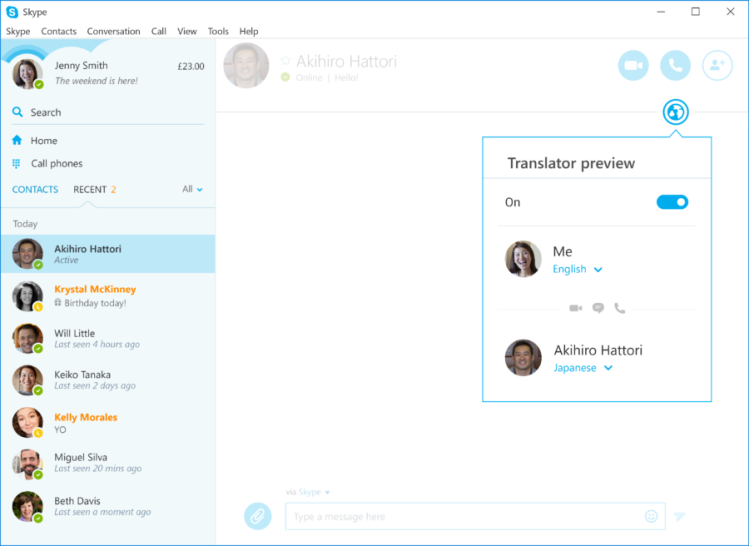Microsoft is expanding its real-time Skype translation tool for spoken word into Japanese, its tenth language.
The software giant first introduced Skype Translator in English and Spanish back in 2014, and it has since expanded into a number of additional languages, including Mandarin, Italian, Russian, and Arabic. In a nutshell, Skype Translator leverages artificial intelligence (AI) smarts such as deep learning to train artificial neural networks, meaning it should improve over time as it listens to more conversations.
Back in December, Skype Translator was expanded to cover calls to mobiles and landlines too, meaning Skype users could call anyone, anywhere, and converse with them in their own native tongue.
The text-based translation element, whereby users communicate across instant messaging, allows for real-time translation across 61 languages, but the spoken-word element is limited to 10. However, it’s worth noting here that all 10 of the compatible Skype Translator speech languages can be converted into the other 61 supported text languages in real time.
June 5th: The AI Audit in NYC
Join us next week in NYC to engage with top executive leaders, delving into strategies for auditing AI models to ensure fairness, optimal performance, and ethical compliance across diverse organizations. Secure your attendance for this exclusive invite-only event.
In addition to real-time verbal Skype translation, Japanese is also now being added to Microsoft’s other translation services, including the standalone Microsoft Translator app.

Above: Skype Translator: Japanese
The U.S. Foreign Service Institute (FSI) ranks Japanese as one of the most difficult languages for English-speakers to learn, alongside the likes of Arabic, Cantonese, Mandarin, and Korean. So the addition of Japanese is a notable move by Microsoft and should prove particularly popular in the business realm, given that Japan is a major global trading market.
Today’s news comes just a few months after Google revealed it would now let users convert from Japanese to English just by hovering their phone over a piece of text, a feature that works completely offline.

